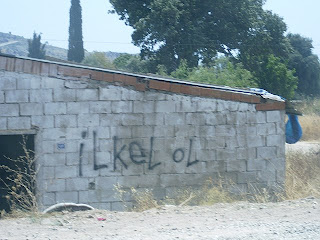Hello All,
This assignment will help you with both the Profile and our last essay, the Personal Essay.
Description
“A fool sees not the same tree that a wise man sees.”
--William Blake
Description is the art of illustrating through detail.
All description begins with perception, which itself originates in sensory detail; we perceive the world through our senses of sight, sound, touch, taste, and smell. Using these five senses, effective writers employ sense imagery to describe all the glories and horrors of the physical world: visual imagery to depict what we can see, auditory imagery for what we can hear, tactile imagery for what we can touch, gustatory imagery for what we can taste, and olfactory imagery for what we can smell.
Visual imagery rests on details we can see: colors, shapes, sizes, scale, and relationships.
Auditory imagery relies on sound details, such as pitch, volume, tone, rhythm, and structure.
Tactile imagery rests on details like texture, temperature, and pliability.
Gustatory imagery uses the senses of the tongue: salty, sweet, sour, bitter.
Olfactory imagery uses the same language as gustatory imagery—i.e., this rose smells sweet—but also depends on connotation and association. For example, some varieties of coffee are described as “earthy,” an adjective with connotations of being natural and alive.
Unlike literal description—which relies upon tangible, physical qualities—figurative description relies upon mental associations and connotations. The two most common types of figurative description are simile and metaphor.
A simile uses like or as to make a comparison between two unlike things whereas a metaphor compares two things by means of equating them. The greater difference between simile and metaphor is in terms of scale; a simile is generally limited and specific whereas a metaphor is generally expansive and general.
For example, if I say that my wife sings like an angel, I am using a simile to describe one quality that my wife and an angel share: the beauty of their voices. There is no other comparison being made.
However, if I say that my wife is an angel, I am using a metaphor to equate my wife and an angel: my wife is beautiful, has a great voice, is in touch with the divine, and so on. Metaphors rely much more extensively on the reader’s imaginations to fill in the blanks with regard to the shared details while similes generally fill in those blanks for the reader.
When crafting similes a metaphors, writers should avoid clichés; the most effective metaphors and similes are the ones that catch our attention, that make us take a second look, that have a bit of what Freud calls the uncanny.
Here are five effective similes:
(for the full poem, visit The Academy of American Poets website: www.poets.org)
1. “I pounced on every joy like a ferocious animal eager to strangle it.” (From “A Season in Hell” by Arthur Rimbaud)
2. “Birds fly back and forth across the lawn looking for home. As night drifts up like a little boat.” (From “After Reading Tu Fu, I Go Outside to the Dwarf Orchard” by Charles Wright)
3. “The black treetops against the sky were like teeth on a saw” (From “Lost” by Stephen Dobyns)
4. “I would touch your face as a disinterested scholar touches an original page” (From “The Lost Pilot” by James Tate)
5. “A hand turned upward holds only a single, transparent question. Unanswerable, humming like bees, it rises, swarms, departs” (From “A Hand” by Jane Hirshfield)
Here are five effective metaphors:
1. “The sun is a red blister coming up in your palm.” (From “A Red Palm” by Gary Soto)
2. “You is a strewn shattered leaf I'd step on, he says.” (From “Abandonment under the Walnut Tree” by D.A. Powell)
3. “The wrath of the lion is the wisdom of God.” (From “Proverbs of Hell” by William Blake)
4. “A boat is a lever.” (From the poem by the same name by Ralph Burns)
5. “You were the wind and I the sea.” (From “After Love” by Sara Teasdale)
For Assignment 9, choose one of these similes or metaphors, and explain why the author may be making this specific figurative description/comparison.



